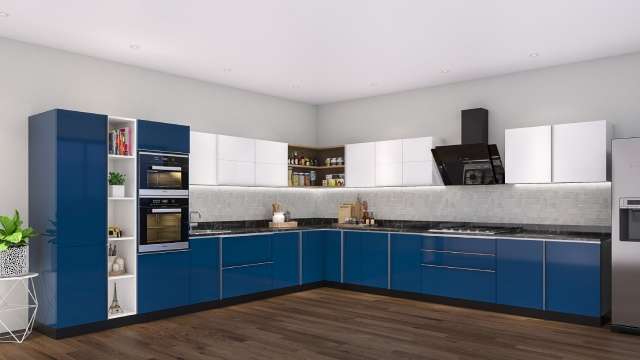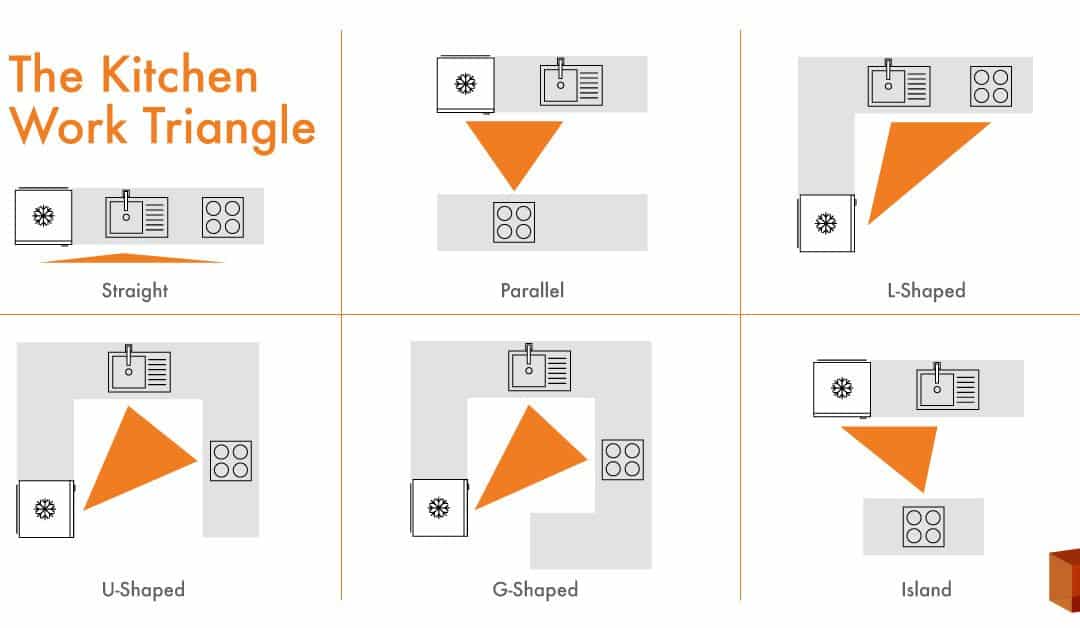

Introduction:
A modular kitchen is a space where functionality and efficiency play a crucial role. To create a kitchen that truly maximizes productivity and ease of use, ergonomic planning is essential. By incorporating ergonomic principles into the design and layout of your modular kitchen, you can optimize efficiency, promote comfort, and enhance your overall cooking experience.
In this blog, we will delve into the power of ergonomic planning and how it can transform your kitchen into a well-designed, efficient space.
The Work Triangle:

The work triangle concept is a fundamental aspect of ergonomic planning. It involves positioning the sink, stove, and refrigerator in a triangular layout, allowing for easy movement and minimizing unnecessary steps during meal preparation. This strategic arrangement streamlines workflow and saves valuable time and energy.
Countertop Height:

The height of your kitchen countertop is crucial for ergonomic comfort. It should be customized to suit your height, ensuring that you can work comfortably without straining your back or shoulders. An ideal countertop height allows for seamless food preparation, cooking, and cleaning activities, promoting a healthier and more enjoyable cooking experience.
Storage & Accessibility:

Ergonomic planning emphasizes smart storage solutions and accessibility. Cabinets, shelves, and drawers should be strategically designed to keep frequently used items within reach, reducing the need for excessive bending or stretching. Pull-out shelves, corner units, and drawer dividers can optimize storage space and make your kitchen more organized and efficient.
Lighting:

Proper lighting is a game-changer in an ergonomic kitchen. Ample lighting, both natural and artificial, ensures clear visibility and minimizes eye strain. Task lighting focused on work areas such as countertops and stovetops enhances safety and makes food preparation easier.
Flooring & Anti-Fatigue Mats:

Choosing the right flooring material is an important aspect of ergonomic planning. Opt for a comfortable and slip-resistant surface that reduces fatigue, especially in areas where you spend a lot of time standing. Anti-fatigue mats placed near the sink or stove provide cushioning for your feet and alleviate discomfort.
Safety Measures:

Ergonomic planning also encompasses safety measures. Rounded edges on countertops prevent accidents, childproofing mechanisms ensure a secure environment, and proper ventilation systems enhance air quality. By prioritizing safety, you create a kitchen that is both efficient and secure for everyone.
Clear Pathways:

Efficient traffic flow is key to an ergonomic kitchen. Clear pathways between countertops, islands, and appliances allow for smooth movement and prevent congestion. This promotes safety and ensures that you can navigate your kitchen with ease.
Conclusion:
Ergonomic planning in a modular kitchen is the secret to achieving maximum efficiency and comfort. By incorporating principles such as the work triangle, suitable countertop heights, smart storage solutions, proper lighting, and safety measures, you can transform your kitchen into a functional and enjoyable space. Investing time and effort into ergonomic planning will not only enhance your cooking experience but also make daily kitchen tasks more efficient and less physically demanding. So, take advantage of the power of ergonomic planning and unlock the true potential of your modular kitchen.

